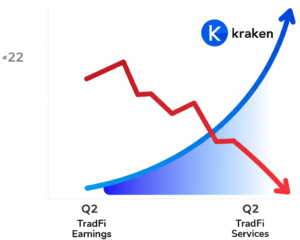Crypto Users Under Siege: Malware-Laden Apps Spread Through Deceptive Ads
The cryptocurrency world is facing a new threat: a sophisticated malware campaign disguised as legitimate crypto apps, targeting millions of unsuspecting users. Cybersecurity researchers at Check Point Software Technologies have issued a stark warning, revealing that over 10 million individuals may have been exposed to this insidious attack. This alarming development highlights the growing need for heightened security awareness within the crypto community.
How the Malware Operates: A Sneaky Trojan Horse
The malicious campaign leverages deceptive online advertisements to lure victims. These ads, often mimicking genuine crypto exchange or wallet platforms, redirect users to websites hosting malware-laden applications. Once downloaded, these seemingly harmless apps gain access to the victim’s device, stealthily stealing cryptocurrency holdings and sensitive personal information, including login credentials for various online accounts.
The Scope of the Threat: A Global Problem
Check Point’s research indicates a widespread distribution of these malicious ads across various platforms, suggesting a well-organized and potentially large-scale operation. While the exact number of successful infections remains unknown, the potential reach of over 10 million exposed users underscores the severity of the threat. The researchers have identified the primary targets to be users in the US and Europe. This widespread reach suggests that the malware developers have invested significantly in the distribution and reach of their campaign.
Identifying and Avoiding Phishing Traps
Recognizing these deceptive ads is crucial in avoiding infection. The key lies in skepticism. Users should always be wary of unexpected advertisements promising unrealistic returns or offering access to exclusive crypto opportunities. Legitimate exchanges and wallets rarely engage in aggressive advertising.

Here are some crucial steps to protect yourself:
- Verify the source: Always double-check URLs and ensure they lead to the official website of the claimed platform. Look for security indicators like HTTPS.
- Check app reviews: Before downloading any crypto app, carefully review user comments and ratings on official app stores. Look for any mention of suspicious activity or security concerns.
- Use strong passwords and two-factor authentication: Implement strong, unique passwords for all your crypto accounts and enable two-factor authentication whenever possible.
- Keep your software updated: Regularly update your operating system, antivirus software, and mobile apps to patch security vulnerabilities.
The Aftermath: A Call for Enhanced Security
This malware campaign underscores the critical need for increased security awareness within the cryptocurrency community. Users must adopt a cautious approach to online interactions, particularly when dealing with financial assets. The incident also highlights the urgent need for greater transparency and improved security measures within the advertising industry to prevent similar attacks in the future. Expect regulatory bodies to pay closer attention to the security of online advertising.
Key takeaways:
- Over 10 million users potentially targeted by a sophisticated malware campaign.
- Malicious crypto apps spread through deceptive online ads.
- Victims lose cryptocurrency and sensitive personal information.
- Vigilance and careful verification are crucial in preventing infection.










